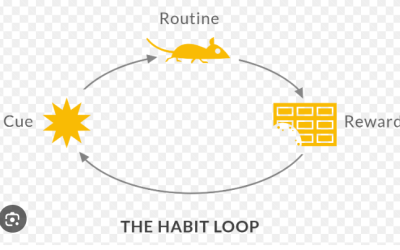Interesting questions thrown up by the world’s move to hybrid working models:
How do you turn up?
How do you engage?
How do you collaborate?
How can you be seen, be heard, be rewarded?
How can you maintain connection and camaraderie with your colleagues?
How do you turn up?
Is work somewhere you go, or something you do?
‘’The social contract for employment is not showing up physically, but showing up mentally and engaging fully from wherever you’re from.’’
Cameras on is a basic requirement to ‘showing up’.
‘’Physical distance can turn into psychological distance’’ MIT finding. I gave a lot of leeway for this in the early days of the pandemic, when people would show up to my online training with their cameras off, as I appreciated that anxiety levels were high and video fatigue was real. However, showing up to a virtual meeting or training is as important as showing up to a physical meeting or training. And you wouldn’t arrive at a physical meeting and sit down with your back to the room, or your head on the desk, would you? We have a responsibility to our work and our colleagues and managers to engage fully from wherever we are.
How do you engage?
Communication needs to be incredibly explicit. We have to be more deliberately open and transparent in what we say and what we are thinking. Explicit in sharing ideas and questions, in raising concerns.
Meetings should happen virtually in a hybrid workplace. It is the fairest and most inclusive way of conducting them, even if there is just one person working remotely. Great care must be taken not to unintentionally alienate someone who is working remotely, and all decisions should be clearly taken at the meeting, not in side conversations in the office corridor.
Be generous in your sense-making of others’ written communications. Work communications conducted via email and text are open to a much higher degree of miscommunication. If in doubt, pick up the phone and chat with the person. We can hear so much more meaning and context when we can hear the other person’s voice.
How do you collaborate?
Play around with meetings / brainstorming and find what works for you. For example an idea could be to brainstorm an idea individually, share anonymously, come together physically to discuss options and make decisions.
The tools of communication are key – be wary of the stop start nature of email as a means for team communication. Instead use more conversation – focused technology tools such as video conferencing, instant messaging such as slack etc.. find what works for your teams – ask them for their input on this.
Non – work related social interactions with colleagues can often spark an idea that may fuel an innovation or solve a problem – so make sure and make time for these interactions to happen. There is plenty we can still do together from a physical distance; virtual coffee breaks and shared lunches, virtual bingo night, take part in a virtual charity race together.
How can you be seen, heard, and rewarded?
We must step up and take responsibility for being seen and heard in the virtual world. Ask for the check-in meeting with your manager, seek the feedback, look for a pathway to growth and development. Speak up in the meeting and offer your ideas. Show them the work you have been doing. Waiting for others to notice and reward you isn’t a viable career plan.
Leaders must step up and ensure that all voices are being heard and sought. For example during the weekly virtual huddle, ask a different voice to lead. Team leaders need to step up and make space in their collaborations for all voices to be given an opportunity.
How can you maintain connection and camaraderie with your colleagues?
Why do we need to do this? What are the benefits of a socially connected workforce? Proven benefits include:
- An antidote to overwhelm and burnout
- Tackles isolation of remote working
- Produces high – performing teams
Sounds good right? So how are some ways to achieve and strengthen that connection and camaraderie?
Recreate the random office chats, those watercooler moments that are the gel that creates bonds. Have open virtual rooms at coffee break and lunch time for people to drop in and have a chat if they wish. Factor in ten minutes at the start of meetings for ‘small talk’, where people can share non work related news and chat.
Offer your team opportunities to form strong relationships. Organise monthly outdoor physical gatherings, such as a team sea swim, or a trip to a farmers market, or an al fresco dinner.
Further research
Check out Automattic – creator of WordPress. Fully remote from outset. ‘Distributed workforce’.
The work of social neuroscientist John Cacioppo – pioneered the research into how detrimental loneliness is to our ability to thrive.
Read Alone Together by Sherry Tuckle – how technology can disconnect us from one another



